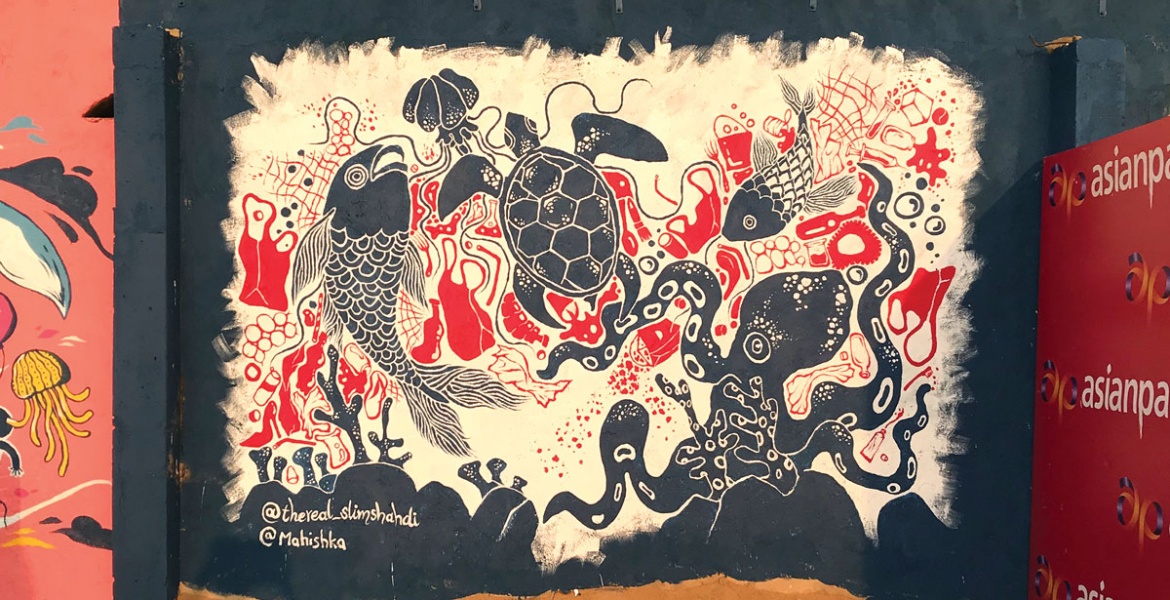Conveying meaning
Social change through architecture
Shahdia Jamaldeen in conversation with Nicola Jayasundera


With a propensity for art even as a young child, it was a defining factor for Shahdia Jamaldeen when choosing architecture as a career choice. Her theory and practice have always been that if you have the skill and ability to represent complexities using art, it’s imperative to use them to highlight the defining moments of your current timeline – and these may be political at times.
Jamaldeen’s most memorable accomplishments include having her artwork featured in an international encounter with renowned author Amitav Ghosh in collaboration with Georgetown University, and being featured in a publication that carried a compilation of the artisans of Sri Lanka and Australia.


Q: What are the major obstacles to the development of architecture, design and construction?
A: The local architecture scene is slightly complicated. Given the availability of skilled labour and materials, it’s sometimes a challenge to push boundaries through design. Something we can definitely do better is to compromise less on the level of finishes – be it furniture, spatial or even our own exploration of design details.
Similarly, the variety of artisans and unique craft-based skills that are available must be appreciated.
In terms of improvement, it’s time to revamp the fee structure and make it more sustainable for architects. It’s odd that in this profession, the structure leaves loopholes for negotiating and bargaining over fees to provide services or secure projects.
Social change through architecture is a challenging theme; it is one that architects must take on as individuals first. This involves fighting small battles against discrimination, being sensitive to the social context, showing compassion in the work you undertake and being willing to walk away from tempting projects that could harm the environment.
Essentially, it’s about working with your conscience. However, upholding this ethos is proving more difficult on a daily basis.
Q: In your opinion, how does architecture contribute to the growth of culture?
A: Architecture has long been the literal and figurative foundation of successful civilisations and cultures. Since culture is only as valid and persistent as the longevity of its practitioners, architecture has always been the backbone of its practice and tradition.
In this context, the application of building design will continue to contribute to the growth of any culture. This is evident in the numerous global movements and styles through which architecture has evolved, and it’s a testimony to changing tastes, ideas, social constructs and innovation.
Currently, there is a renewed focus on internationally recognised architect Minnette de Silva’s writings and designs, which concentrate on regional modernism.
The styles and concepts of modern architecture that include angular lines, highly functional aesthetics and planning – primarily Western ideology that was coupled with the region’s endemic ornamentation, artisanal qualities and local clientele – are now synonymous with Sri Lankan architecture as a whole.

Q: Is enough being done to encourage young talent in this field?
A: Due to the challenging economic conditions in Sri Lanka, the construction industry has been badly affected. In turn, architects have also been severely impacted due to a shrinking market of clients and projects, very little international investment in large-scale developments and a hidden monopoly on design projects.
It is difficult to encourage young talent to enter this field in such challenging times especially when the path to qualifying as an architect is a marathon that requires solid commitment.
At this point, the only way to encourage young talent in the field is to promote innovation and improvisation with the limited resources available while fostering the notion of learning complementary skills as well.
Architecture is associated with many creative fields such as graphics, illustration, project management, landscaping, urban studies, photography, 3D visualisation, research and writing, and so on.
It’s important for students to build their skills in other areas as these are very useful in times of restructuring. This can be done while maintaining a relationship with architecture and design.
Q: The skyline of Colombo is changing dramatically… what are your thoughts on this?
A: The skyline of any country is usually reflective of its economic capital and policy makers, and remains dependent on the administration and its investors.
Our skyline is indicative of this particular aspect, and represents a pastiche of ego driven projects, questionable investments and handshakes.






